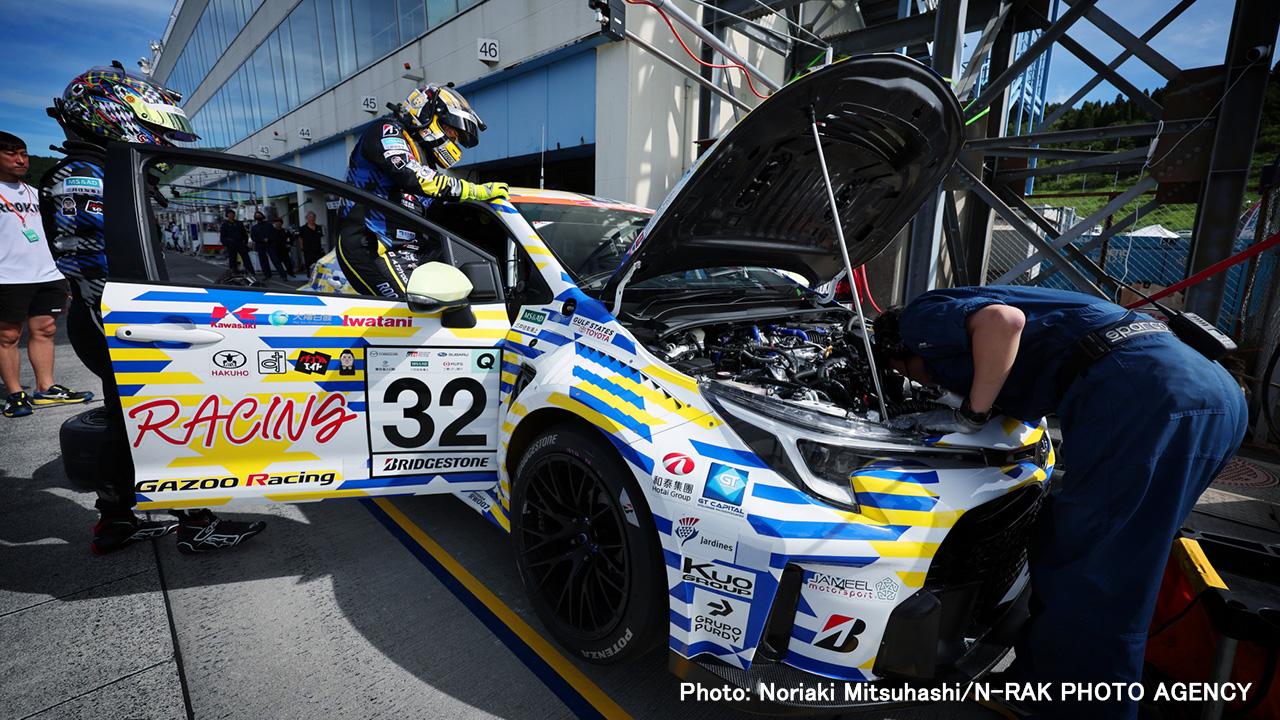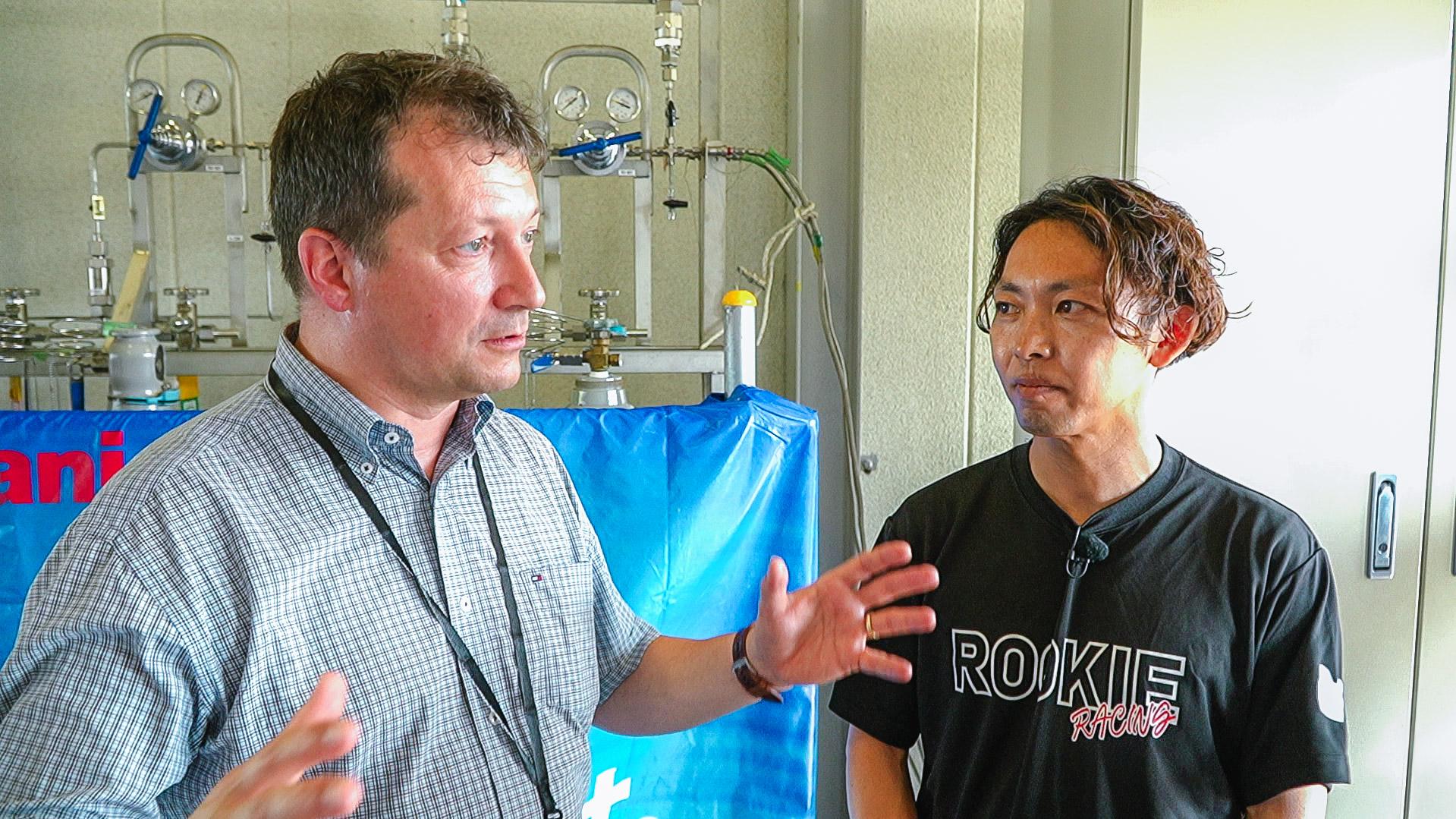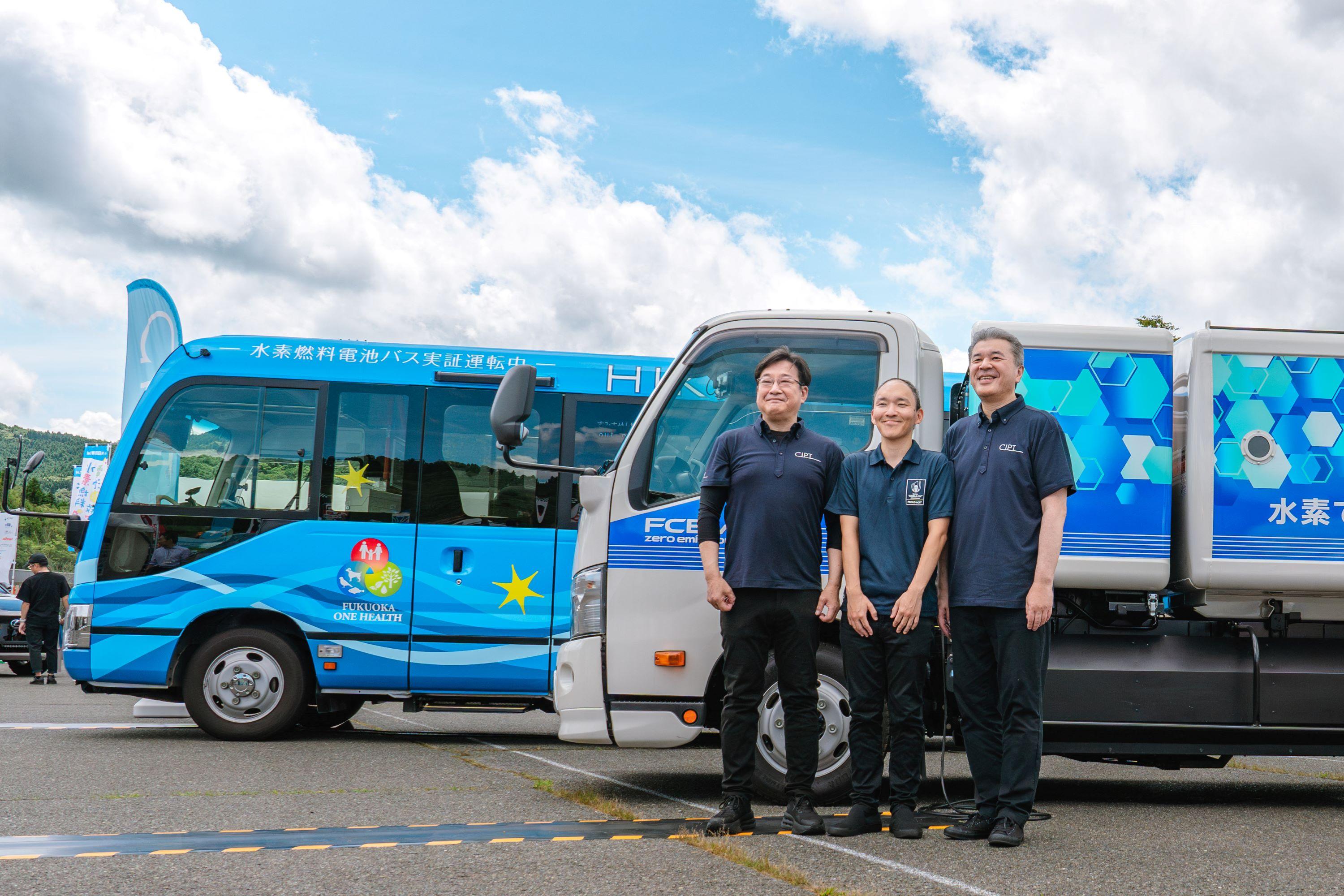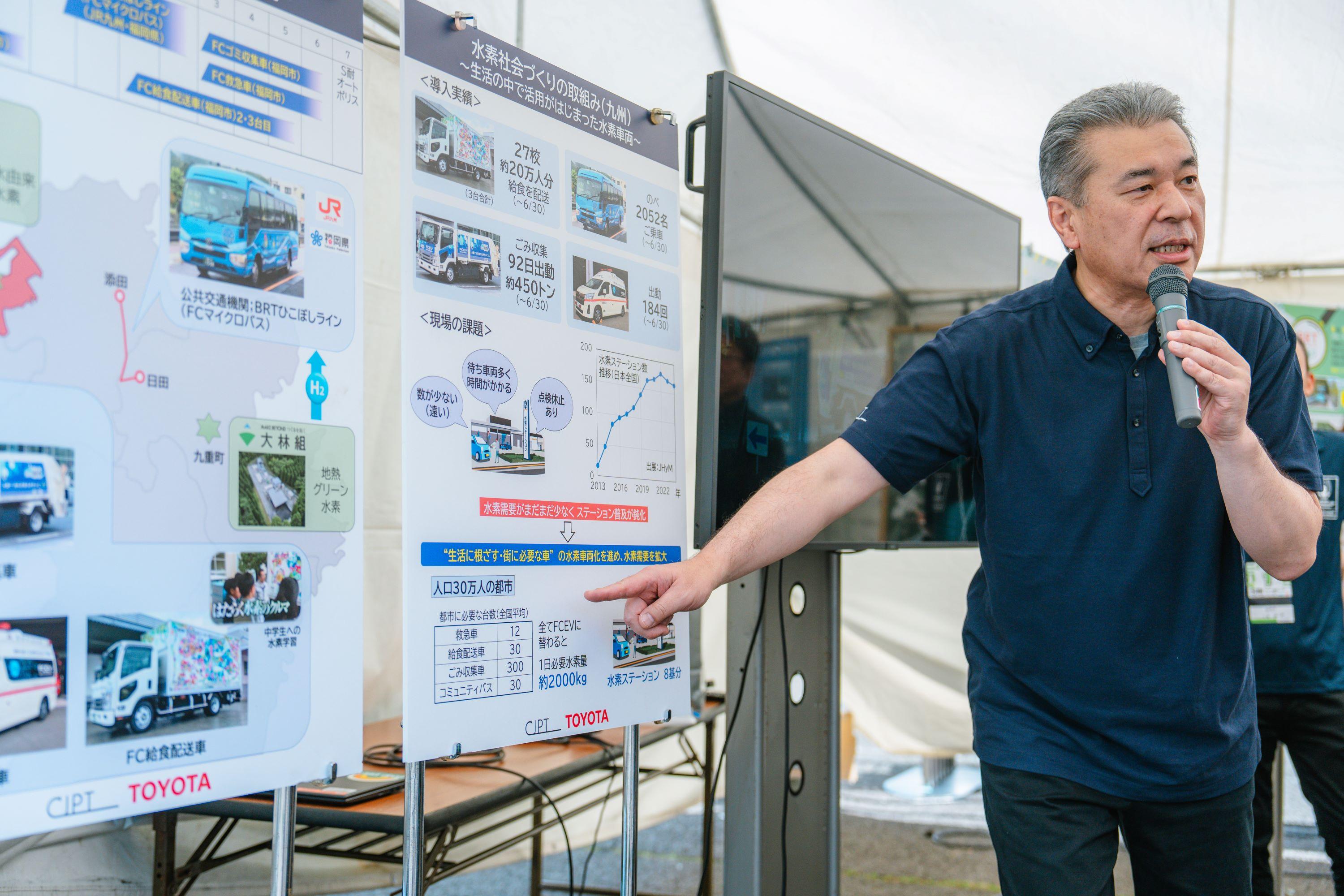
It's not just about honing cars but drawing us closer to a hydrogen society. Toyota Times brings you the latest hydrogen updates from the racetrack, including new technologies headed for public trials and new friendships being built around the world.
Hydrogen friends around the world
We couldn’t mention Autopolis without touching on another important topic: the bonds of cooperation with other organizations taking on the challenge of liquid hydrogen.
In the pits after the race, Toyota’s developers explained their liquid hydrogen system to Pierre-Jean Tardy, chief engineer of hydrogen technologies at Alpine, a French racing team.

This year, the two companies began collaborating on liquid hydrogen technologies, aiming to compete in the FIA World Endurance Championship’s hydrogen fuel prototype class, which is slated for 2028.
At this year’s Le Mans 24 Hours, Alpine performed a demo run of its Alpenglow, a hydrogen engine concept car fueled by gaseous hydrogen.
Given Toyota’s focus on exploring hydrogen’s potential in motorsport, Alpine is both a like-minded peer and a rival.
“We’re really grateful to Toyota, which leads the way in liquid hydrogen systems, for welcoming us and collaborating on all aspects of the technology,” says Tardy.
The feeling was reciprocated by Project Manager Ryosuke Yamamoto (GR Vehicle Development Division), who heads the development of the liquid hydrogen Corolla: “With more people getting involved, more ideas will emerge, and we can help each other to raise the bar. As Morizo says, the enemy is carbon, not our competitors. We want to work together on developing technologies for the future.”
Regarding the lines between competition and cooperation, Tardy commented, “In areas such as driving, aerodynamics, and engine technologies, each team will keep their secrets and battle it out on the track. But when it comes to liquid hydrogen systems, we need to be as transparent as possible and collaborate with our rivals.”
Such friendships are essential for the development and spread of liquid hydrogen technologies, as well as for fostering an understanding of their safety and establishing regulations.
While competing as rivals, Alpine and Toyota also collaborate sensibly as like-minded peers, united in their desire to create sustainable mobility through racing. Such international friendships around liquid hydrogen are likely to keep growing and to become a key point moving forward.
Teaming up with local governments
Autopolis is located in Kyushu, a region where many other trials involving hydrogen are also underway.
Last July, Toyota Executive Vice President Hiroki Nakajima, who also serves as president of CJPT*, outlined a roadmap for the spread of hydrogen technologies and announced the rollout of vehicles through a B to G (Business to Government) approach.
*Commercial Japan Partnership Technologies. Established by Toyota, Hino, and Isuzu in April 2021, with Suzuki and Daihatsu joining that July. The partnership aims to accelerate the rollout and adoption of CASE technologies, helping to solve the issues faced by the transportation industry and contributing to the creation of a carbon-neutral society.Since then, real-world trials have identified numerous successes and hurdles.
In February 2022, Toyota and CJPT signed a partnership agreement with Fukuoka City aimed at realizing a hydrogen society. Starting with school meal delivery trucks last July, the city introduced fuel cell (FCEV) versions of municipal vehicles, including garbage trucks and ambulances, both in March 2024.

By the end of this June, the school meal trucks were serving some 200,000 pupils in 27 schools. The garbage trucks and ambulances have respectively been dispatched on 92 days and 184 calls.
Unusually for Japan, Fukuoka City’s garbage collection is done at night, and the shift to fuel cell trucks has helped to reduce noise.
Similarly, this unique advantage of electric vehicles also proved beneficial in ambulances, making it easier to communicate with patients on board who cannot speak loudly.
At Autopolis, these three FCEVs were shown alongside an FCEV Coaster used on the Hikoboshi Line, a Bus Rapid Transit (BRT) system set up with Fukuoka Prefecture and JR Kyushu, connecting the town of Soeda in Fukuoka with Hita in neighboring Oita Prefecture.
The meal delivery and garbage collection trucks on display were prototypes. “We’d hoped to bring the actual vehicles, but they’re out working hard again today,” explained Vice President Nakajima, demonstrating how far the project has come. “I wanted to convey that reality—in the past, all we had to show was the prototypes, and now you have to go see them out in the streets.”

The data gained from having vehicles out in the real world seeds further improvements toward achieving a hydrogen society. Also, the more time FCEVs spend out in the community, the more hydrogen comes to feel like a part of everyday life.
While creating the vehicles for a hydrogen society, Toyota is also working to ensure society is ready for the changes they will bring.

